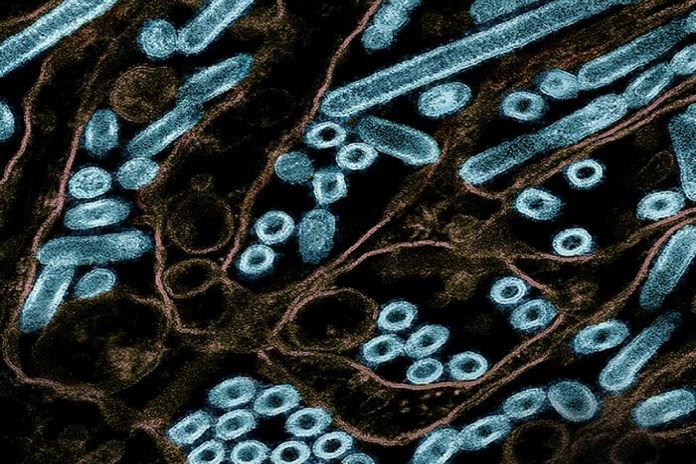- Some antiviral drugs highly effective against bovine H5N1
A highly pathogenic avian influenza (HPAI) H5N1 virus, isolated from the eye of a farm worker who became infected through contact with dairy cows, was lethal in mice and ferrets infected in a high-containment laboratory environment, according to a new study in Nature. The study investigators also found that the virus isolated from the worker, who experienced mild inflammation of the cornea (conjunctivitis), could be transmitted through the air between separated ferrets and might be capable of binding to and replicating in human respiratory tract cells.
The virus isolated from the worker is called huTX37-H5N1 and has a mutation (PB2-E627K) frequently seen in avian influenza viruses that replicate in mammals, typically making virus replication more efficient. These mutations underscore the need for continued monitoring and evaluation of viruses from the current H5N1 outbreak.
The study also showed that a bovine H5N1 virus is susceptible to the antiviral drugs favipiravir and baloxavir marboxil (brand name Xofluza) of the polymerase inhibitor class, as well as the neuraminidase inhibitor zanamivir. The virus is less sensitive to oseltamivir (Tamiflu), another neuraminidase inhibitor.
In laboratory experiments, huTX37-H5N1 replicated in human cornea and lung cells. The scientists determined the lethal dose of huTX37-H5N1 as less than 1 plaque-forming unit (PFU) in mice, compared to 31.6 PFU as the lethal dose of a bovine H5N1 virus isolated from the milk of a lactating cow. The huTX37-H5N1 virus also infected each of 15 different mouse tissues tested, with the highest virus levels found in respiratory tissues.
Researchers also infected ferrets with a high dose of huTX37-H5N1. Flu infections in ferrets more closely resemble human flu infections than those in mice. All infected ferrets died within 5 days and scientists found huTX37-H5N1 virus in all the tissues sampled, with high levels in the respiratory system. In a prior study, the researchers had infected ferrets with a bovine H5N1 virus and, although it caused severe disease, lethality was limited.
To evaluate respiratory transmission, the scientists placed healthy ferrets in cages about 5 centimeters away from ferrets infected one day earlier with one of four decreasing doses of huTX37-H5N1. All directly infected ferrets died within 6 days and, depending on the exposure dose, between 17 percent and 33 percent of the nearby animals became infected via respiratory droplet transmission. These results indicate that a bovine HPAI H5 virus isolated from an infected person can transmit among mammals via respiratory droplets, though with limited efficiency.
The authors note that the person infected with the huTX37-H5N1 virus did not develop severe illness. In fact, human cases reported from the current outbreak have mostly experienced conjunctivitis and/or mild respiratory symptoms. The researchers speculate that eye infection with a low dose of bovine H5N1 virus might result in localized conjunctivitis without severe disease in humans. Multiple exposures to seasonal human influenza viruses, they say, might provide people with low levels of protection against currently circulating HPAI H5N1 viruses—though additional study is needed.
In summary, this study characterizes the huTX37-H5N1 isolate, finding that it may be capable of replicating in cells of the respiratory tract in humans, that it is pathogenic in mice and ferrets, and that it is capable of being transmitted by the respiratory route in ferrets. The authors note that “based in these observations, every effort should be made to contain HPAI H5N1 outbreaks in dairy cattle to limit the possibility of further human infections.”
Scientists from the University of Wisconsin at Madison led the research with collaborators from Shizuoka and Tokyo Universities and the Research Center for Global Viral Diseases in Japan. The National Institute of Allergy and Infectious Diseases (NIAID), part of the National Institutes of Health, funded much of the work through its Centers of Excellence for Influenza Research and Response program.
NIH/National Institute of Allergy and Infectious Diseases: NIH, the nation’s medical research agency, includes 27 Institutes and Centers and is a component of the U.S. Department of Health and Human Services. NIH is the primary federal agency conducting and supporting basic, clinical, and translational medical research, and is investigating the causes, treatments, and cures for both common and rare diseases.





